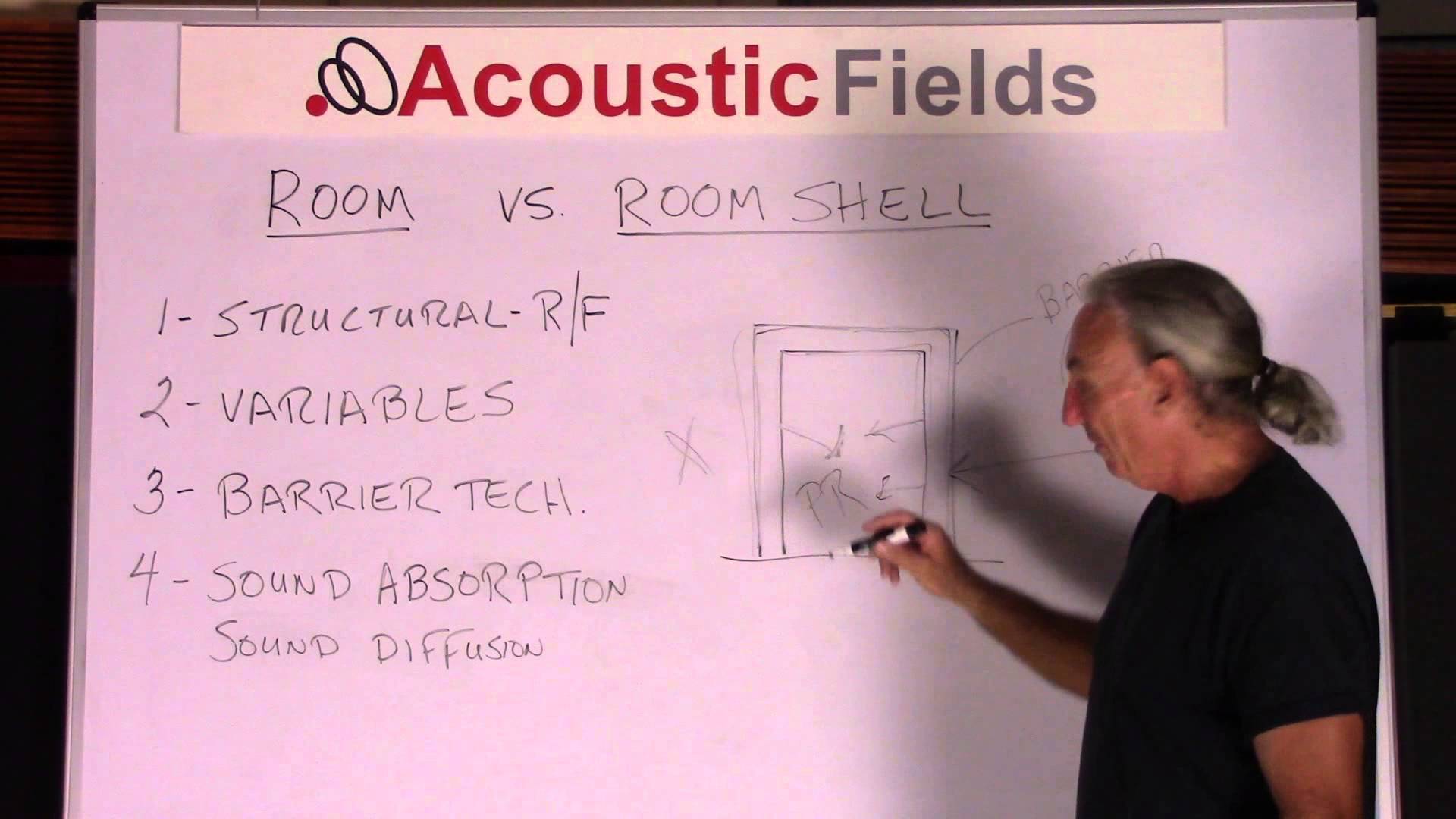Today we’re going to talk about the room versus the room shell and why the misnomer that is soundproofing and acoustic treatment are completely different concepts. There’s a lot of confusion that we see in people’s comments and I think once again some definitions and clarity will help the situation because you’re room requires a certain set of guidelines in order to get good sound out of it and then the shell, in an ideal world when you’re designing and building a room, require special conditions and variables that must be addressed. So let’s define some things and use some examples here and I hope this will help clarify things a little bit.
In an ideal situation when you’re building your room, you’re really building a room within a room. It’s kind of like that Russian doll concept. We have a small dollar inside a bigger doll and you just keep opening up in its layers. We have an outside area which is really our barrier and that’s called the shell. So when you see the term shell you know that that’s the outside barrier of the room.
Now what does the shell do?
It does two things:
1. It keeps noise from entering the room and
2. It also keeps noise in the room where it belongs.
So it serves two functions. It has a structural design, it has a structural capacity that it must follow so it’s barrier technology and it’s isolating sounds that occur outside the room from getting in and sounds that are in the room from getting out.
Now that said, what is the room?
Well the room is different. The room deals with the energy that’s in the room. So that’s where our sound absorption and sound diffusion technologies come into play to manage the pressure in the room and to manage the reflections of the room surfaces. So we have the shell that’s designed to keep noise in and out and then we have the inside room which must deal with the two areas of pressure and reflections.
So most of us don’t have the luxury of having two rooms or a room within a room so what we have to do then is to use the existing room as both a barrier and a treatment type of situation. Well most rooms that we see are not designed to isolate any kind of sound from anything. Really they’re two by four, two by six frame structures and quite honestly those structures don’t do much for isolation if your noise levels are high inside or outside.
So once again we’re trying to get one structure, our existing room to do many things and that’s just not possible. So we always run into difficulties, we always run into “oh there’s too much noise in the room” next door to our home theater. Well that can’t be helped unless you’re willing to build the appropriate barrier technology to isolate the sound because the science behind isolation and the science behind the room treatment elements, diffusion and absorption, are completely different. There are some similarities but they are a little bit different.
The important relationship between the room and the shell
Another thing you have to realize when you finally build your room within a room is that there is a relationship between the room, the shell and the room. There’s an air space between them. There’s some kind of space between them and that all has to be calculated and then energy from the room will leave the room and strike the shell and then come back in the room. So there is a flexibility rigidity ratio that you have to maintain between the shell and the room construction in an ideal situation.
A lot of people use concrete for the outside barrier. It makes sense, lots of mass, its expensive, it does achieve some isolation properties, it does have good sound transmission class ratings but that’s a very rigid structure so when energy leaves your room, and it will, and it strikes the shell, it’s reflected back into the room. So you need to have some kind of balance between the structure, the room and the outside barrier. So there’s a, I call it a rigidity-flexibility ratio that you must maintain. All of this, the shell, the room everything inside contributes to the type, quality, and signature if you will of the sound in your room so everything has to be taken into consideration.
What I see a lot of people trying to do is use their existing room and wonder why it’s not keeping sounds inside and keeping outside sounds from coming in. Well its because it’s not designed to, it’s designed basically as a room which you put sound absorption and sound diffusion technologies in.
In Summary
Let’s look at the outside room as our shell and that’s our barrier between noise from the outside of the world and keeping the sound that we produce inside of it from leaving and going into adjacent rooms and then we have the room itself which we use sound absorption and sound diffusion technologies. So sound diffusion, sound absorption technologies in the room, barrier technology for the structure itself is completely different so I hope that helps you grasp a little bit of the difference between the room and the room shell.
I hope this discussion helped. Feel free to contact me directly at: 520 – 392 – 9486 MST or info@acousticfields.com. If you would like to learn more about room acoustics please sign up for my free videos and ebook by joining the mailing list here. And if you would like your room acoustic issues analysed for free by me then please fill in the form here and I will be happy to take a look for you.
Thanks and speak soon
Dennis







